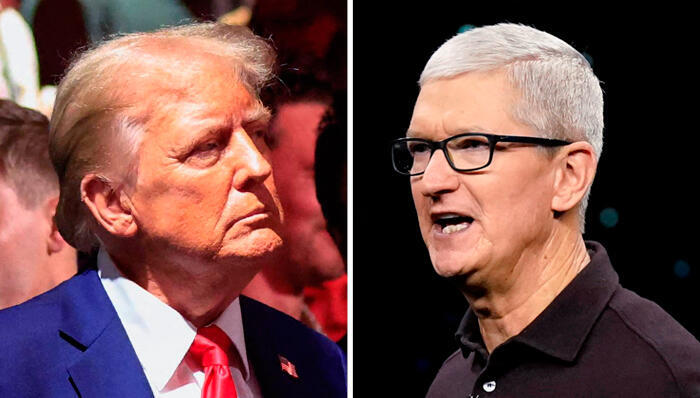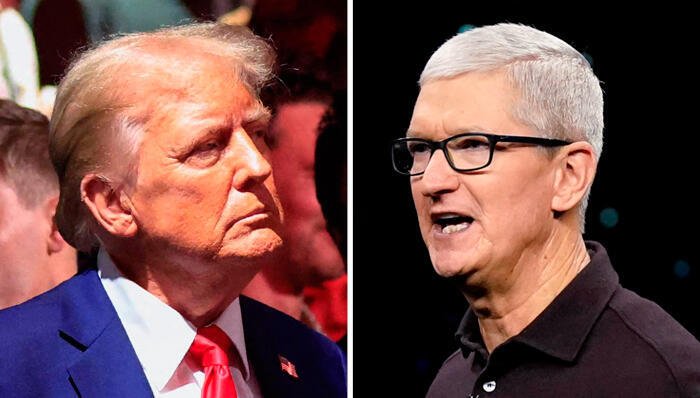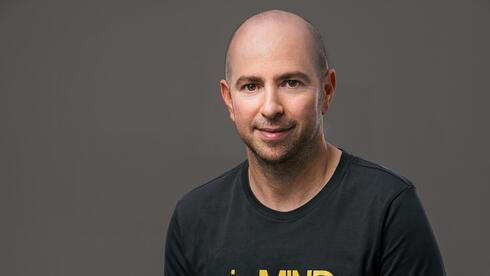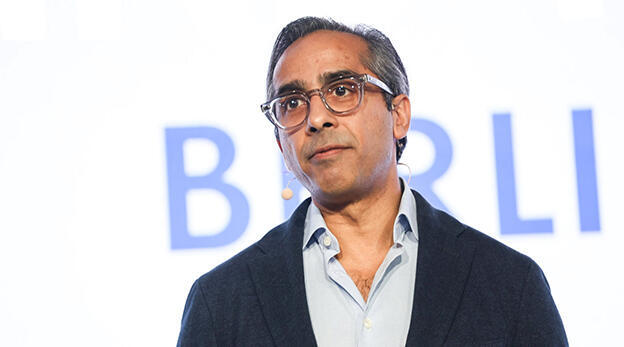
The developer conference that won’t save Apple
As WWDC 2025 opens, Apple faces stalled AI, Trump’s tariffs, and regulators tearing down its walled garden.
The period leading up to Apple’s annual developer conference in 2024 was marked by a mix of tense anticipation and cautious optimism. The tech giant was expected to unveil its long-awaited strategic plan for the AI era, and fans and developers hoped Apple, seen as significantly lagging behind competitors, would pull a rabbit out of its hat that would propel it to the forefront of the field, or at least put it back in the running.
One year later, the mood ahead of the WWDC 2025 conference, which begins on Monday, is defined more by apprehension, disappointment, and fatigue. Last year, Apple did indeed pull out a rabbit - an AI system called Apple Intelligence, which promised a breakthrough: combining advanced AI models with Apple’s deep integration across hardware and user data to create a privacy-preserving assistant that could anticipate user needs and act accordingly.
1 View gallery


President Donald Trump, Apple CEO Tim Cook
(Photos: Kena Betancur / AFP AP Photo/Jeff Chiu)
But when the system reached consumers, the rabbit turned out to be a mirage. The features that shipped, AI tools for writing emails, summarizing push notifications, or generating images, fell short of offerings from companies like OpenAI, Google, and Anthropic. Worse, they didn’t meaningfully improve throughout the year, while rival companies rolled out stronger, faster models. The centerpiece upgrade, an overhauled Siri powered by modern AI, was repeatedly delayed. In March, Apple postponed the release indefinitely due to major development challenges, despite senior leadership changes in the division.
Now, Apple arrives at WWDC 2025 at an even greater disadvantage in AI than it faced a year ago. While competitors surged ahead, Apple has mostly stood still. Though the company may be preparing a major announcement under its usual veil of secrecy, expectations are for a more modest presentation focused on cosmetic changes to its operating systems. "Apple will be much more cautious about overpromising, and will avoid revealing features that aren't ready for prime time," analyst Craig Moffett of MoffettNathanson said last week.
But Apple’s AI crisis may not even be its most serious problem. And no developer conference, no matter how flashy, can solve what lies ahead.
In addition to its AI troubles, Apple faces two mounting threats: punitive tariffs that could erode profit margins, and intensifying regulatory pressure in the U.S. and Europe to open up its tightly controlled ecosystem, both of which could hit the bottom line hard.
Related articles:
Though Trump-era tariffs on most countries have been suspended, their long-term status is uncertain. Apple’s global business model depends on a hyper-efficient supply chain centered in China. Any new tariffs, especially targeting Chinese production, would either shrink profits or force the company to raise prices.
Apple tried to hedge its bets by ramping up iPhone production in India, a country with lower tariffs. But that strategy didn’t sit well with Trump. “I had a little problem with Tim Cook yesterday,” Trump said in Qatar on May 15. “I said to him, ‘Tim, you’re my friend. I treated you very good. You’re coming in with $500 billion.’ But now I hear you’re building all over India. I don’t want you building in India.’”
Days later, that irritation turned into a threat. “I have long ago informed Tim Cook of Apple that I expect their iPhone’s that will be sold in the United States of America will be manufactured and built in the United States, not India, or anyplace else. If that is not the case, a Tariff of at least 25% must be paid by Apple to the U.S.”
Part of Trump’s anger reportedly stems from personal slights, such as Cook declining his invitation to a Middle East trip attended by Nvidia’s Jensen Huang and OpenAI’s Sam Altman. But the business stakes are real. If Trump carries out his threat, Apple faces a no-win choice: move production to the U.S. at immense cost and risk, or absorb tariffs that cut into margins, or raise iPhone prices, which could harm sales.
Meanwhile, Apple’s closed ecosystem is being challenged in courtrooms and regulatory offices worldwide. In the EU, the Digital Markets Act (DMA) has forced Apple to allow third-party app stores and sideloading. The European Commission is now investigating whether Apple’s initial restrictions on alternative app stores violate the law.
In the U.S., a federal court recently forced Apple to let app developers direct users to alternative payment systems, a significant blow in a lawsuit brought by Fortnite developer Epic Games. Apple’s services division, which accounts for its highest margins and second-largest revenue stream (after iPhone sales), depends heavily on in-app purchase fees. If developers bypass Apple’s payment system, revenues could fall sharply.
And one more revenue risk looms: the potential end of Apple’s lucrative deal with Google. Each year, Google pays Apple tens of billions of dollars to remain the default search engine on Safari. In August, a U.S. court is expected to rule on remedies after finding Google guilty of maintaining an illegal search monopoly. One proposed remedy: banning exclusive deals like the one with Apple. If enforced, this would remove yet another pillar of Apple’s earnings.
None of these structural threats will be addressed on stage at WWDC. Tim Cook and his team will smile and demo their usual polish, assuring the world that Apple’s future is bright. But behind the scenes, Apple faces a set of urgent, interconnected challenges: closing its AI gap, defusing tensions with the White House, justifying its developer fees, and finding new sources of revenue.
A flashy keynote can’t fix what’s really wrong.













